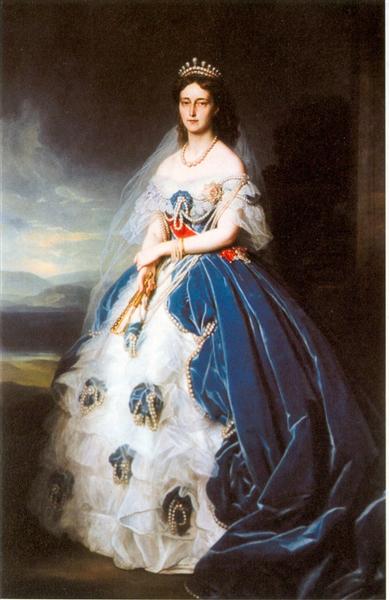1830 - 1870
Neo-Rococo

description
From the German word Neurokoko, from the English Neo-rococo.
Neo-Rococo painting is a 19th-century art movement that mimics the 18th-century Rococo and Pompadour style and reflects the grace and sophistication of the aristocracy. Its characteristic feature is eclecticism. It originated in France as a belated “royal style”. Neo-rococo was embodied in painting, graphics, interior and furniture design, sculpture and architecture. Particularly influenced by women’s fashion.
The key genre is portrait: portraits of princesses and princes, queens and kings, empresses, princesses, their children and courtiers. The artist depicts the crowned heads, the bourgeois and the nouveau riche against the backdrop of landscapes and fashionable interiors. The artist emphasizes the luxury and pomp of the interiors with modern decorative furniture, silk wallpaper, miniature pillows, Indian carpets, gilded frames of paintings and mirrors; Floral ornament, like a liana, covers and modifies all surfaces, from walls and furniture to textiles for clothing. Ladies in floor-length dresses, made of expensive fabrics, white, cream, beige, lavender, less often black, blue and red. The dresses are framed with lace, bows and ruffles. The neo-rococo paintings tell us that a stripe, a narrow sleeve and a top opening in front are in fashion. Ladies have amazing hairstyles, of various shapes, with fresh flowers and ribbons woven in, with adornments and tiaras. If this is a man, he is a confidently standing person with correct posture and a proud look must be sure; in the hands or on the belt, he has got items that emphasize his status. Children are dressed in miniature “adult” clothes.
Key masters: Jean Baptiste Carpo, Auguste Renoir, Konstantin Somov, Alexandre Benois, Ulpiano Checa, Salvador Sanchez Barbuda, Paul Mervart, Auguste Serrure, Jean-Louis-Ernest Mesonier.
